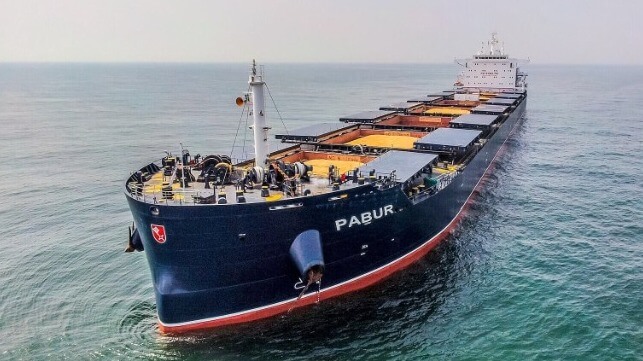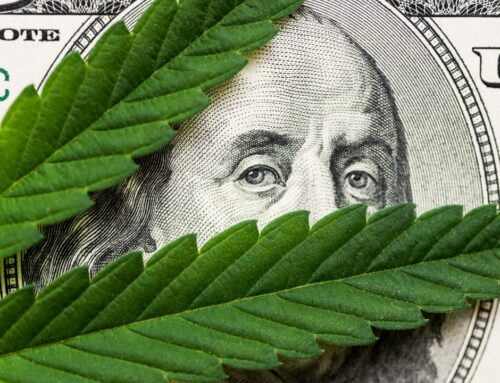Shipping and the Energy Transition
October 18, 2024

Although the extreme demands of energy transition activists are receiving pushback from the public, the pressure for change remains. International forecasters point to the recent rapid growth of renewable energy as confirming that the transition is not merely underway but growing rapidly. However, that conclusion is being challenged.
U.N. Secretary-General António Guterres has declared that “We stand at a moment of truth.” That truth, in his estimation, is that “We are playing Russian roulette with our planet.” He went on to warn, “We need an exit ramp off the highway to climate hell, and the truth is we have control of the wheel.”
Ditching hydrocarbons sooner rather than later is imperative and embracing renewable energy is mandatory, according to Guterres.
The Guterres message was followed by the International Energy Agency predicting that the world is on course for an oil consumption peak by 2030. It forecasts an eight million barrel-a-day oil supply glut by 2035. Such a glut, the IEA says, will destroy the economics of oil production and devastate not just the balance sheets of oil and gas companies but also the economies of OPEC countries.
The IEA says purveyors of hydrocarbons must shift their capital spending away from hydrocarbons and into renewable energies.
The IEA’s conclusion is, however, challenged by the latest data from the Energy Institute Statistical Review of World Energy, which shows hydrocarbon consumption growing faster than renewable energy despite the latter’s privileged status and billions in government support.
Government subsidies boost weak renewable energy project financial returns compared to hydrocarbon investments. They’re often the only way renewable projects secure financing, given their capital-intensive nature. An emerging problem for governments struggling under growing national debt loads is that renewable energy subsidies are overwhelming their budgets.
Changed Economic Climate
Subsidies are increasing to offset renewables’ poor returns due to a changed economic climate.
These projects benefited from nearly two decades of ideal conditions for capital-intensive investments. Inflation was low, and supply chain issues were non-existent. The era’s low interest rates enabled developers to flourish by utilizing high debt-to-equity financing structures to elevate the normal low returns of these projects. High interest rates are forcing the abandonment of high-cost renewable energy projects.
The changed economic environment sees hydrocarbon prices rising as people demand the societal benefits these fuels provide. International oil companies are earning record profits from their traditional hydrocarbon businesses. After seeing the public clamor for more hydrocarbon energy, they’re shifting their investment focus away from renewables. Similarly, developing countries are doubling down on hydrocarbon power to provide jobs and cheap energy for their economies.
China is an example of the conflict between clean and dirty energy investments. China has the world’s largest renewable energy generating capacity – four times that of the U.S. Its renewable spending in 2023 was double what the E.U. and U.S. spent. At the same time, China built more coal-fired power plants than the rest of the world combined. Neither trend is expected to change in the foreseeable future.
What is energy’s long-term future? The transition to clean energy is underway. Its pace is uncertain, but a road map exists. Accelerating the transition will force significant personal, business and government adjustments. However, renewable energy’s intermittence, dramatically lower financial returns, need for backup utility systems and the requirement for new supply chains will make the transition expensive.
Building a New Supply Chain
A blind spot in the energy transition narrative is renewable energy’s new supply chain. It will take time to build, and the cost will be significant. The challenges will impact the pace of building the supply chain, affecting the amount of critical minerals available for clean energy technologies.
In 2022, the IEA released a study on the role of critical minerals (copper, nickel, cobalt, lithium, rare earths) in energy transitions. The IEA has two models to predict the energy market and resulting emissions. While the models are for 2050, they also produce interim results. This groundbreaking study focused on what is required of energy and mineral markets to reach the IEA emissions targets in 2040.
The two models are STEPS (Stated Policies Scenario) and SDS (Sustainable Development Scenario). STEPS means the world and energy markets evolve based on current policies. The SDS model assumes governments will institute policies to meet the emission targets of the 2015 Paris Agreement.
The IEA study focused on clean energy technologies: solar, wind, other low-carbon power generation, electric vehicles and battery storage, electricity networks, and hydrogen fuel. STEPS found that critical mineral demand increased fourfold over 2020-2040. The increase becomes sixfold in SDS. EVs and battery storage needs will drive mineral growth.
Both STEPS and SDS confirm that demand for critical minerals will soar. However, we haven’t seen any study outlining how that demand will be met. Not only are we unsure where the supplies will come from, but we do not know the volumes needing to be moved from mine to refinery and eventually to final consumers. How long with it take to build this supply chain? We know that the maritime industry will be key in delivering those critical mineral supplies.
Maritime’s Role
For the last few decades, the maritime industry has focused on growing the container vessel fleet as global trade patterns shifted in response to producing goods in low-cost labor countries. This resulted in finished products needing to be shipped to developed countries.
Many countries with low labor costs also have low energy costs, generating rapid economic growth, especially in Asia. From 2011 to 2024, the number of container ships in the global fleet increased by 25 percent as carrying capacity grew by nearly 80 percent. Bigger ships dominated the growth.
Critical minerals are found in many countries in the Southern Hemisphere. South America has many ore suppliers, followed by African and Asian countries. Developed countries have enacted laws and mandates, along with providing subsidies, to accelerate the energy transition. To avoid exploitation, some critical-mineral-producing countries have instituted policies directing their industries to move up the value creation curve by refining the ores or starting manufacturing businesses to create intermediate or final clean energy products.
Mineral ores are transported to market by dry bulk carriers. As the energy transition has accelerated, the volume of minerals transported has grown, necessitating more bulk carriers. From 2011 to 2024, the bulk carrier fleet increased by 65 percent with a 13 percent expansion in the past three years. Since 2020, an additional 1,600 dry bulk carriers joined the fleet.
With the IEA forecasting four- to six-fold increases in the volume of critical minerals by 2040, will we need 4-6 times the number of bulk carriers to move them? If so, we would require 2,300-3,500 new ships to enter the fleet annually until 2040. That ignores any fleet losses from accidents and retirements.
In recent years, shipbuilders added 400-500 new bulk carriers a year. Could they construct 6-8 times the number of bulk carriers delivered annually? If they were the only ships built, maybe it’s possible.
Additionally, ships are built from steel. More ships mean more iron ore must be transported from mines, adding to bulk carrier demand. Offsetting fleet growth could be reduced coal shipments.
The number of new bulk carriers depends on the distances they travel. Issues such as low water in the Panama Canal due to drought and avoiding the Red Sea and Suez Canal because of Houthi attacks will impact distances traveled. The speed of bulk carriers could also affect the number of new vessels needed. The time spent in ports loading and unloading ships will play a role. Larger ships take longer to load and unload.
The need for such a rapid fleet expansion is occurring along with the IMO’s efforts to decarbonize shipping. Abandoning hydrocarbon fuels means finding new energy sources for vessels. Experimenting with multiple clean energy technologies has shown none to be as cheap or convenient as bunker fuel. Solving that problem will take time.
The uncertainty over future vessel power has shipowners hesitant to expand fleets rapidly. A wrong engine choice could shorten the economic life of a vessel with disastrous financial fallout. Therefore, the powering solution will add to vessel operating costs and boost the cost of transportation.
Will There Be Enough Ships?
According to the U.N. Trade and Development database, 93 percent of new ships are built in China, South Korea and Japan. While shipbuilders in China continue to increase their capacity, is it feasible to expect them to expand fast enough to deliver the number of new ships required for the energy transition?
Shipping industry challenges have been ignored in the transition debate. They must be addressed for it to advance.
Top image courtesy Harren & Partner / CC BY SA 4.0
The opinions expressed herein are the author’s and not necessarily those of The Maritime Executive.
Search
RECENT PRESS RELEASES
Related Post



